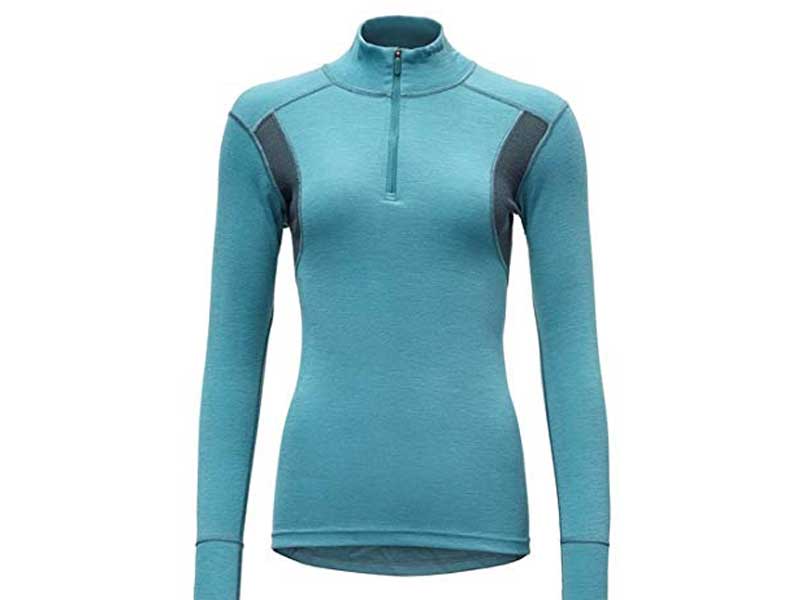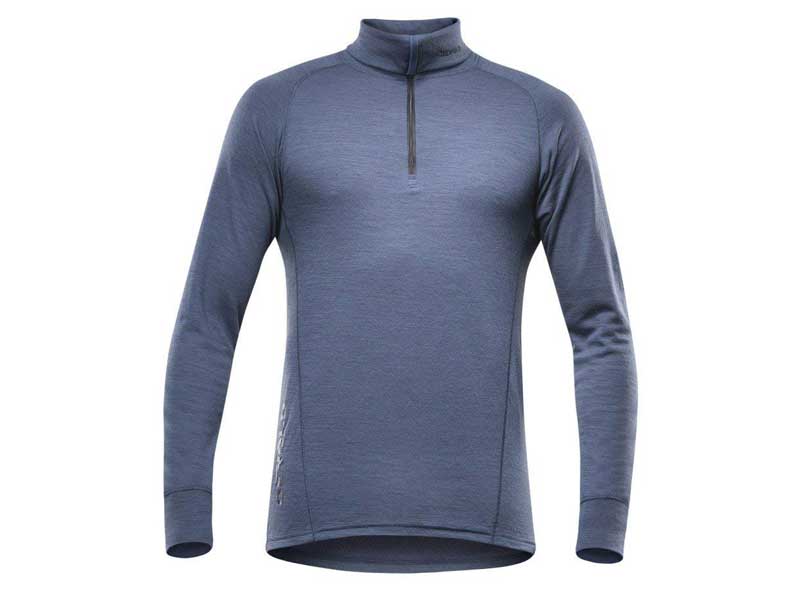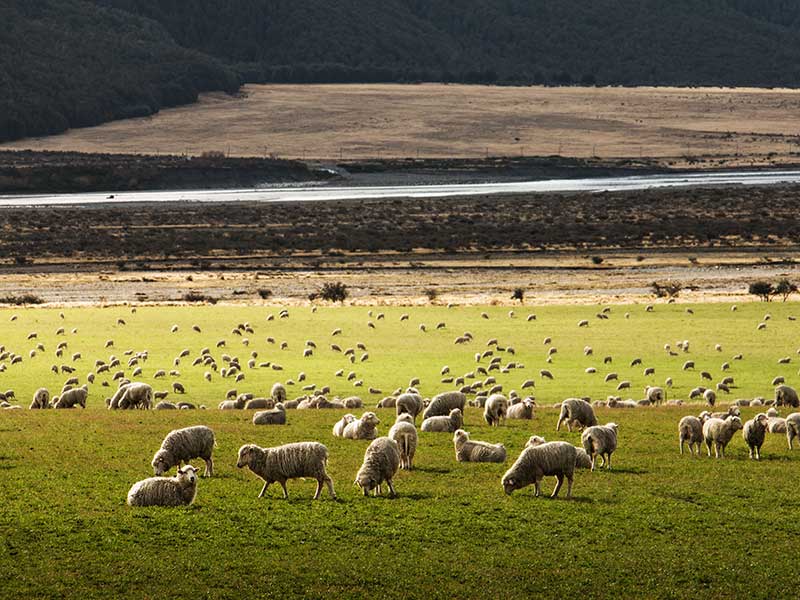Merino wool clothing for the mountains: everything you need to know and how to care for it.

When you buy mountain clothing The aim is for it to provide the necessary warmth, to dry moisture as quickly as possible and to act as an insulator. To meet these requirements, brands choose to use merino wool or synthetic fibres in the manufacture of clothing. All brands that manufacture specialised mountain clothing use these materials for the manufacture of the garments. Both are of very good quality, but merino wool stands out in some aspects. In this article we will focus on merino wool. We will go in depth about its main characteristics, and we will give basic tips for its care.
Merino wool is made from the wool of the merino breed of sheep. These are mainly found in Australia, New Zealand and South Africa. You can find all kinds of garments made from this type of fabric on the market; from T-shirts to underwear.
The Norwegian brand Devold (Click to view articles) has been working with high quality wool for more than a century and a half, and has dressed some of the most renowned feats and milestones in his long career with his outdoor clothing.


Characteristics of merino wool.
All of these garments share the following characteristics:
- Absorbs moistureThis type of wool is capable of absorbing water vapour. Moisture is retained in the wool fibres. However, water retention does not mean that the wool gets wet. The surface of the fibre repels water, so the material feels dry.
- It is a thermal and breathable insulator.The air pockets inside the fibres make the wool insulating. The air pockets also allow the insulation to function even in wet conditions. The air pockets also contribute to the breathability of the garments.
- SmoothnessMerino wool fibres are very fine and therefore comfortable. However, there is a prejudice about wool that it is "itchy" on the skin. This is not true of merino wool garments, as they are very soft.
- No smellMerino wool is antibacterial. This means that bacteria can hardly lodge in the wool fibre, and therefore do not smell bad even after wearing it during a long activity.
Frequently asked questions.
The general characteristics of merino wool mentioned above bring unique qualities to garments made with this fabric. Do you know what they are? Below, we will answer the most common questions about merino wool.
Why doesn't merino wool itch?
The fibres of merino wool are curly and make up a wavy structure. In addition, these fibres contain millions of air pockets that keep the body warm. Thanks to the bonding between the fibres, there are fewer points of contact between the material and the skin, which is why merino wool does not itch. In addition, it is very soft to the touch.
How does it regulate temperature?
Merino wool is able to regulate moisture absorption, so it also regulates body temperature. Synthetic fabrics usually let moisture through and do not absorb it. In the case of merino wool, it is different because it is hydroscopic, i.e. it absorbs water vapour to insulate it from the skin of the body. Merino wool is capable of holding 30% of its weight in moisture. In addition, it holds moisture, but feels dry to the touch. These properties are unique to merino wool, and make them ideal garments to wear on warm days.
Why does it heat up even if it is wet?
This is one of the most surprising qualities of merino fibre. The moisture it contains is used to generate heat. This is due to a physical process that takes place between the molecules of the fibres and the water. The molecules collide with each other and generate energy. As a result, the temperature rise can be more than ten degrees. The heat capacity will vary according to the quality of the wool. However, garments made of synthetic fabrics lose heat as soon as they get wet. For the best possible heating performance of merino wool garments, one should ensure that the garment is dry before wearing it.
Why doesn't she smell after dressing her?
Unlike synthetic fibres, merino fibres have a flaky surface, which makes it difficult for bacteria to settle and grow. In principle, sweat does not smell bad, but the batteries cause unpleasant odours to develop. In the case of merino wool, it is more difficult to create such odours, as the fabric is very efficient at absorbing and evaporating sweat. As a result, merino wool garments can be worn for many hours or many days without causing unpleasant odours.
Does merino wool have disadvantages?
It is true that merino wool is a very environmentally friendly because it is 100% natural and biodegradable, and because not having to clean the garments continuously means less impact on nature. However, there are some bad practices on some Merino sheep farms and farms in New Zealand, Australia and South Africa. Especially farms in Australia are criticised because the animals are subjected to painful treatment to prevent parasite infection. Fortunately, a movement against this practice has been created and today manufacturers can identify the extraction process of the wool they purchase. Therefore, it is recommended to buy merino wool clothes from the best brands, because they will surely be committed and offer top quality wool, and ethnically correct wool. However, this means that the price will be a little higher than usual.

Merino wool or synthetic fibres?
In conclusion, it can be said that merino wool provides great benefits compared to synthetic fibres. Two of its strong points are its softness and its ability to regulate temperature. The last one is that they do not smell bad. So, in case you are going to make multi-day excursions you will need fewer changes of clothes, and you will have to carry less weight on your back.
Care and cleaning of merino wool.
Although we have mentioned that merino wool garments do not generate bad smells, it is logical that they should be washed after use. However, as with most of the clothes, they should be cleaned as little as possible, so that the fabrics are not damaged. In the following, we will explain how often and how to clean merino wool garments. Merino wool can be said to be self-cleaning. This is due to the living nature of wool. Thanks to this property, one can wear a merino wool garment for several days in a row. For basic cleaning, it is sufficient to hang it outdoors. Ideally, they should be left to air out in humid climates, so that the water vapour expels dirt and odours. In this way, the fibres return to their natural state and regain their characteristic elasticity. It is recommended to leave a day between wearing a merino wool garment. However, it is also possible to machine clean these garments provided that the manufacturer's instructions are strictly adhered to.
The use of the washing machine.
If you decide to use the washing machine, there are several tips to follow in order not to damage the sensitive merino fibres. First of all, it is important to detergents containing plasticisers must not be used.. Merino wool is finer than conventional wool, and these plasticisers can split and damage the molecules of the merino fibres. In addition, if the wrong detergents are used, the garments can lose their natural shape. The recommended detergents are those detergents with pH neutral and softener free. Detergents without artificial additives can also be used.
To decide which washing programme to use, you should read each manufacturer's instructions. The programmes vary depending on the garments. The most common will be to use short programmes at 30 or 40 degrees. For drying merino wool, the use of a tumble dryer is not recommended at all. It is best to lay the garment on a flat surface and let it dry. Air drying also works.
Fastpacking is not about going faster. It's about going lighter.
If you come from classic trekking, this is the next step: learning to move with less weight,
more fluid and enjoying every kilometre more.
Join the channel and start discovering what lightness feels like.
